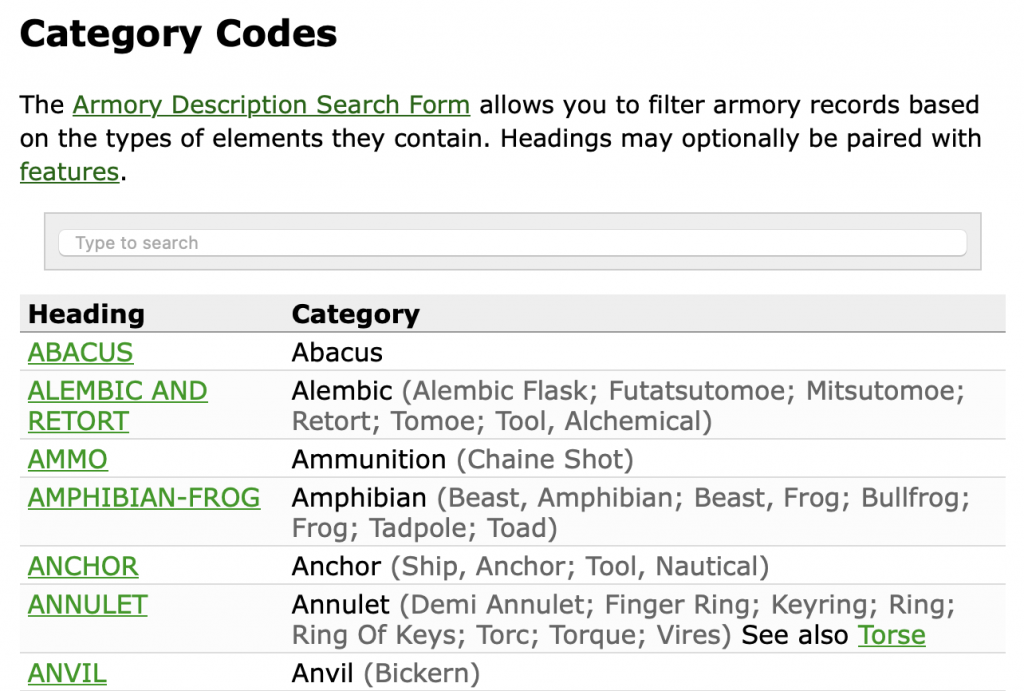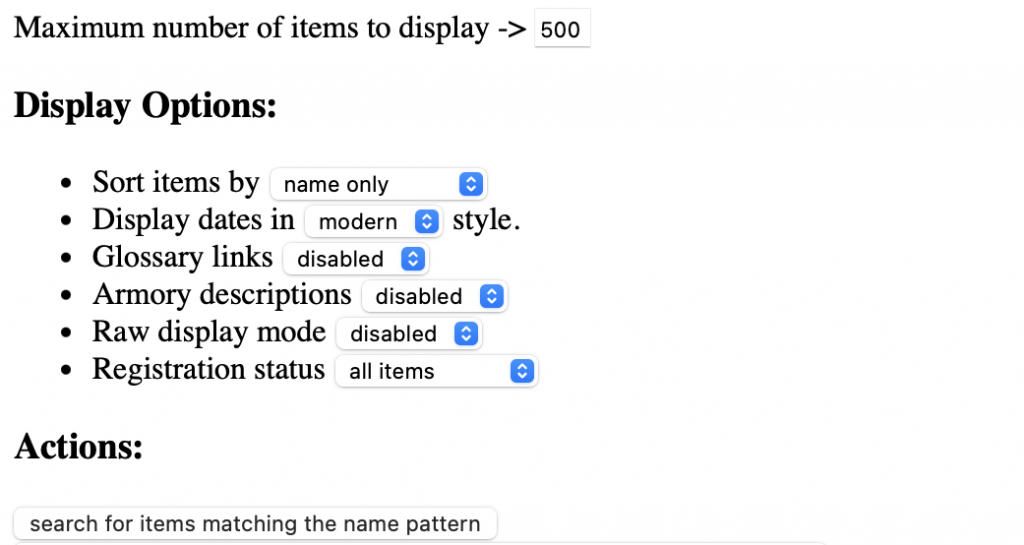As part of my ongoing efforts to prototype possible changes to the College of Arms website, I’ve applied a related set of stylistic changes to my local mirror of the SCA’s armorial database.
Under the hood, this site is running a fork of the main O&A codebase (along with a custom local configuration file), so the core functionality is the same, but a number of changes have been made to the user interface throughout.
Site-Wide Visual StylE
The most obvious changes are to the overall appearance of the site.
- There’s a site-wide header and footer that provide a bit of visual branding that matches the SCA’s main heraldry website.
- There’s a row of navigation links in the header that allows quick access to each of the main search functions.
- The text is set in a sans-serif font that is easier for some people to read, matching the readability prototype I made for the College website.
- There’s some initial work done to make the site more usable on mobile devices with small screens, although this has not been tested thoroughly.

Supporting Pages
- The list of “Related Web Pages” has been moved from the bottom of the home page to a separate “About” screen and expanded with more links, including direct access to the various search hints pages.
- A new set of “search code lookup” pages allow users to find category headings and feature codes without scrolling through my.cat, and to find record types and kingdom codes without scrolling through the database format documentation. The category and feature codes both offer a “type to search” capability to make it easier to find relevant entries.

Display Options
- On the search forms, the display options are presented in a more compact manner. Optional items which can be turned on or off are shown as checkboxes rather than select menus.


Other Tweaks
- When displaying search results, the database copyright statement is only shown when requesting more than the default search limit.
